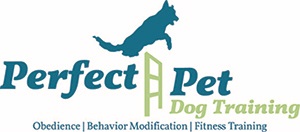Fearfulness in dogs can develop at any age. Often times the cause is lack of socialization to different people, animals, places and things during the prime puppyhood socialization period. Other causes include emotional trauma, physical abuse or simply not getting enough social interaction on a regular basis throughout the dog’s life. Shyness and fear are traits that can lead to aggression and biting. Fear aggression is a defensive behavior and is mainly a learned trait.
Although dogs of all ages can be helped for fearfulness, the best scenario is to begin the socialization process at a very young age for the dog. One of the most important things we can do for our puppies is to prepare them to live in a world full of strange people, dogs, other creatures and unusual sights, sounds and smells. There are plenty of safe places to take a puppy to expose them to as much sensory stimulation as possible during the early critical periods of their lives. Some examples of places to take your dog are: an outside patio at a restaurant, hardware stores, a friend’s house and children’s sporting events.
The things we often see dogs are afraid of are:
- Strangers handling them
- Cars
- Large rolling objects (trash bins, carts, wheel chairs)
- Other dogs
- Dogs barking
- Unfamiliar places with a lot of stimuli
Puppies can easily be counter conditioned and desensitized around new, strange things with the use of high value treats and patience on the human’s part. It’s important to use high value treats that they will not ignore in a stressful situation. In many cases, dog food and treats are not enough. In these situations we recommend using things like cheese, chicken, ham, turkey, etc. (This will not teach your dog to beg unless you are feeding it to them from the kitchen table!)
When introducing your puppy to new things it is okay for them to feel nervous and stressed, however, you do not want them to be terrified. Take your time and gradually introduce your puppy to the new scary thing. Help your puppy work through his fears by getting his attention with a treat, redirecting his attention towards you and then offering the treat. Do this a few times and then move away from the thing he found scary and praise him for recovering quickly. Slowly increase the intensity until the dog is comfortable around the stimulus. Periodically expose the dog to the stimulus so that training is reinforced. It is repeated, low level exposure to safe things that help your puppy develop into a confident adult dog.
Other ways to prevent fearfulness:
- Take your dog out with you when you run errands. Introduce your dog to as many people and dogs as possible.
- Teach your dog obedience skills. This will help the dog have something to do and build confidence.
- Take your dog on walks. Walks are a great opportunity for your dog to see other dogs, joggers, passing cars and bicyclists.
- Do not comfort and coddle your dog when he displays fear. This will teach the dog that a fearful response will be rewarded (with petting and telling him “it’s okay”). Instead take your treats out and redirect your dog’s attention – passing car = treats!
A well socialized puppy should have multiple new experiences every week or even better every day! A well socialized, trained dog is fun to be around and can enjoy may more activities with the family. Take note of the things your puppy is fearful of, and if you’re having trouble socializing your puppy to certain things give us a call!
For more information about our training programs and AKC S.T.A.R. Puppy class contact us at info@perfectpetdog.com or 803-210-9380.
Visit our website at www.perfectpetdog.com
Find Us on Facebook!

Leave A Comment
You must be logged in to post a comment.